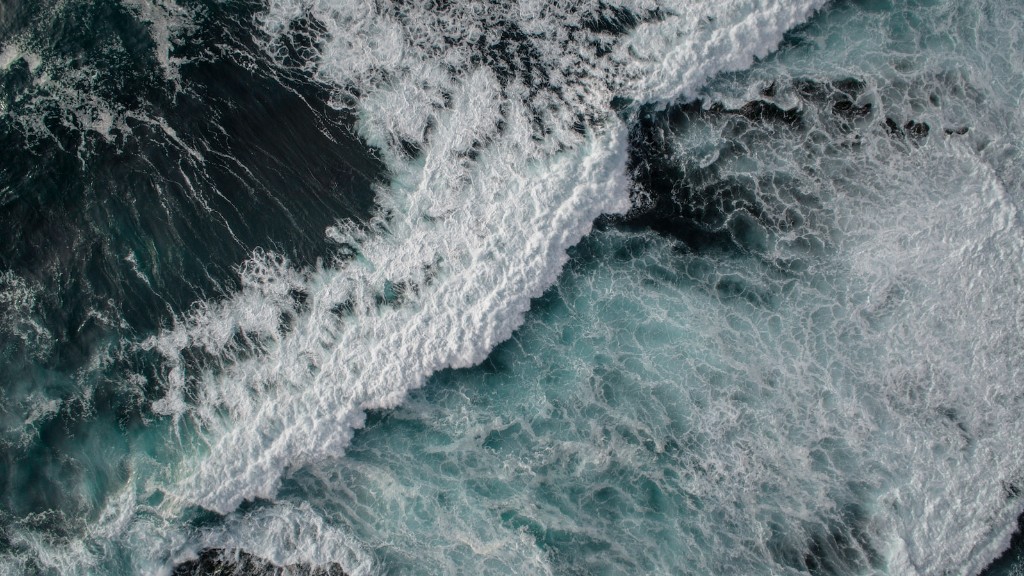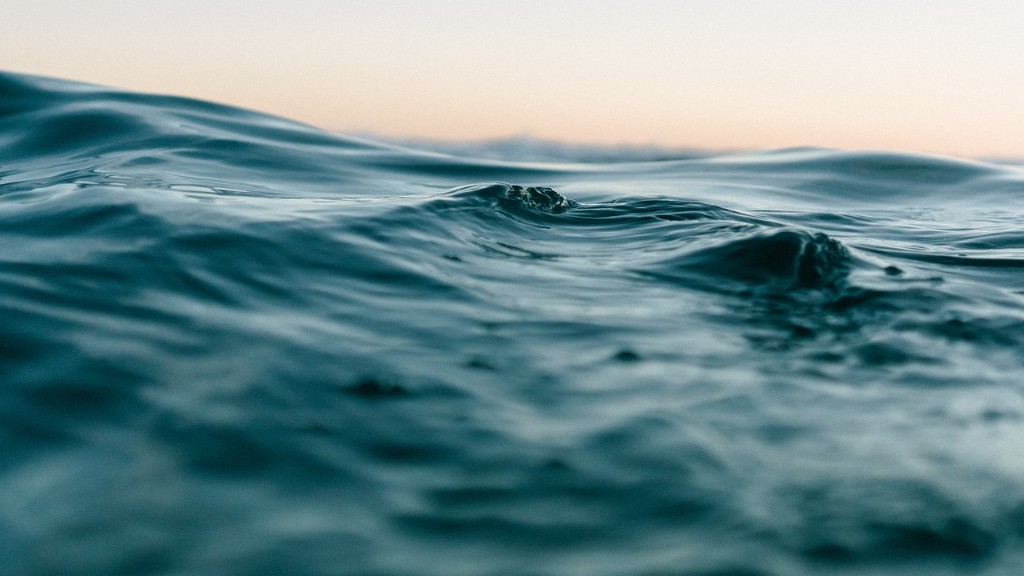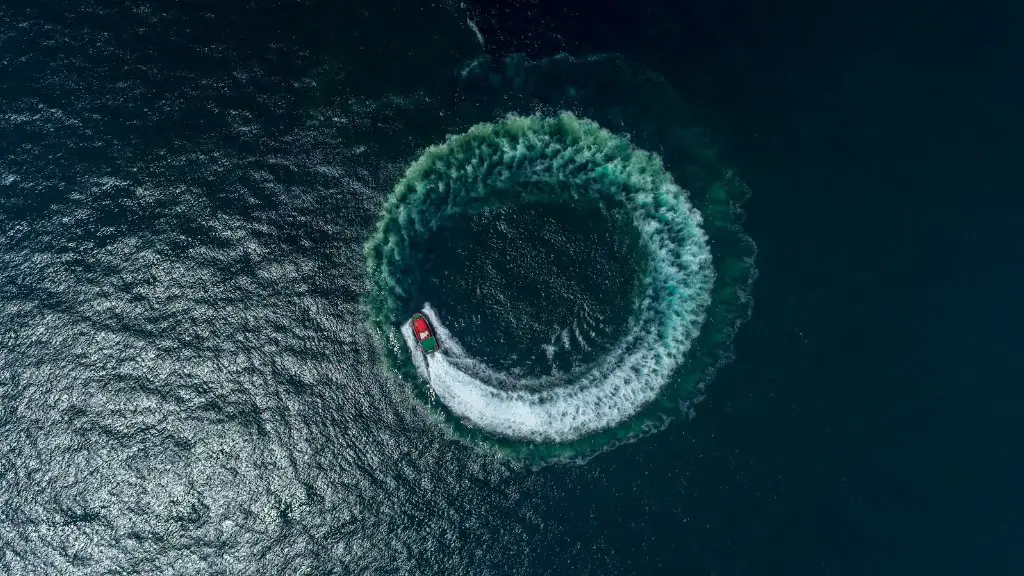Economic Value
The South China Sea is one of the most strategically important bodies of water in the world, with many nations including the United States, China, Japan, and the Philippines having vested economic interests in the region. It is home to some of the most valuable fisheries in the world, providing a crucial source of food to millions of people. It also provides a direct shipping route for over $3 trillion worth of goods each year which includes around 70 percent of all seaborne oil shipments. This makes the South China Sea one of the most important shipping routes in the world.
The South China Sea is also an immense source of potential oil and gas reserves, estimated to contain around 11 billion barrels of oil and 190 trillion cubic feet of natural gas. The Chinese government has long sought after these resources, and the islands in the region have become a point of contention in recent years for their potential for oil and gas exploitation.
Environmental Impact
The South China Sea is home to some of the most biodiverse habitats on the planet, containing nearly one-third of the world’s coral reefs, over 3,000 species of fish, and hundreds of species of migratory birds. Unfortunately, the region is not immune to the dangers of over-exploitation, human conflict and the devastating effects of climate change.
As this region is so important for fisheries, the destruction of coral reefs, mangroves and seagrass beds in order to drill for oil and gas has had significant environmental impacts on the marine life in the region. Furthermore, the presence of ships and vessels from different countries can increase pollution and endanger vulnerable species. The Chinese government has long been accused of disregarding the environmental impacts of their activities in the region.
Political Significance
The South China Sea has become an important piece of geopolitical jigsaw, with competing claims on a variety of islands in the region leading to rising tensions between different countries. China have long laid claim to much of the region and have sought to extend their control by constructing a series of artificial islands in the region, complete with airstrips and military bases, something which is seen by many as a strategic move to assert their dominance in the region.
This has been met with strong opposition from the international community, with countries such as the United States and Japan making their own claims to the islands. The region is also a major source of conflict between China and the Philippines, as both sides claim sovereignty over certain island chains.
International Law
The United Nations Convention on the Law of the Sea (UNCLOS) gives nations the right to a 200-mile exclusive economic zone in the region. This has been used by many countries to claim sovereignty over the various islands and reefs in the region, which has in turn made the South China Sea a region of competing interests.
In 2016, The Permanent Court of Arbitration in The Hague ruled that China’s claims to many of the islands in the South China Sea lacked legal merit, however China refused to adhere to the ruling, insisting that the court had no jurisdiction over the issue. This has created an uneasy standoff between China and the other countries in the region.
Military Tensions
As tensions in the region have grown, so have military ties. The United States has dispatched warships to the region on multiple occasions in order to reassert its presence in the region, as well as challenging China’s presence in the region. China has responded with its own military presence, with the government ramping up its investment in military vessels and aircraft in the region.
The presence of multiple different navies in the region has caused a great deal of anxiety among the various nations, and in 2016 a skirmish broke out between the Chinese and Filipino navies, resulting in a confrontation and an eventual stand down. This incident has highlighted the potential for the situation to spiral out of control if left unchecked.
Regional Implications
The current stalemate in the South China Sea has a direct impact on the security and stability of the Asia-Pacific region, with many countries in the region relying heavily on the resources of the South China Sea for their own economic security and prosperity.
The unresolved nature of the dispute has caused a great deal of uncertainty and instability in the region, which has had a negative effect on trade and commerce in the region. In addition, the potential for the situation to escalate into a full-scale conflict is very real, and has added to the tension and animosity between the countries involved.
Regional Cooperation
Given the complexity of the situation in the South China Sea, it is clear that a diplomatic solution is the only viable way to reach a resolution. The Association of Southeast Asian Nations (ASEAN) is currently leading the charge in this regard, with the organization taking steps to de-escalate the situation and foster dialogue between the various claimants.
The organization has proposed a Declaration of Conduct for the region, which would involve all claimants respecting each other’s sovereignty and resolving disputes peacefully. This, combined with closer cooperation between the various claimants, could be the key to finding a lasting solution to the conflict, and allowing the region to once again become a stable and prosperous area.
Regional Implications
The dispute over the South China Sea is an ongoing and complex situation with serious implications for the Asia-Pacific region. The economic value and strategic importance of the South China Sea makes it an indispensable body of water, both for the countries who lay claim to it and for the many other countries and economies who rely on its resources.
The destruction of the environment as a result of the presence of different military forces, as well as the ongoing dispute over sovereignty of the islands, has caused a great deal of tension and instability in the region. As such, it is imperative that all stakeholders find a diplomatic solution which respects the interests of all the parties involved.
Environmental Protection Strategies
The South China Sea provides a vital ecosystem for millions of people and animals, as well as playing an important role in the global economy. As such, it is of paramount importance that governments and international organisations take steps to protect the environment in the region.
The UN have established a number of initiatives to help reduce pollution in the region, including the Global Programme of Action for the Protection of the Marine Environment from Land-Based Activities, and the UN Environmental Programmes Regional Seas Action Plan for the South China Sea. In addition, countries such as China and the United States have also taken steps to reduce their environmental impact in the region, with both countries signing up to the International Maritime Organisation’s Global Initiative on Reducing Marine Pollution from Ships.
Furthermore, the ASEAN grouping of countries has been attempting to foster closer economic cooperation in the region in order to promote sustainable development in the South China Sea. This has included a variety of initiatives such as the hosting of maritime exercises and the promotion of responsible fishing practices.
Confrontation Mitigation
Given the potential for confrontation and conflict in the South China Sea, it is essential that all claimants take steps to reduce tensions in the region. The United States has been leading the charge in this regard, engaging in joint exercises with Chinese forces in order to promote mutual trust and understanding.
In addition, several international organisations have also begun to pay more attention to the situation, with the International Crisis Group launching its South China Sea Training Programme in 2016. This was aimed at bringing different stakeholders in the region together for discussion and training in order to reduce the risk of conflict.
Other initiatives have also been taking place, such as the East Asia Summit’s Maritime Security Dialogue and the Asia-Pacific Regional Forum’s Maritime Security Architecture. These are designed to foster closer dialogue between the different parties and help to build trust and understanding.


